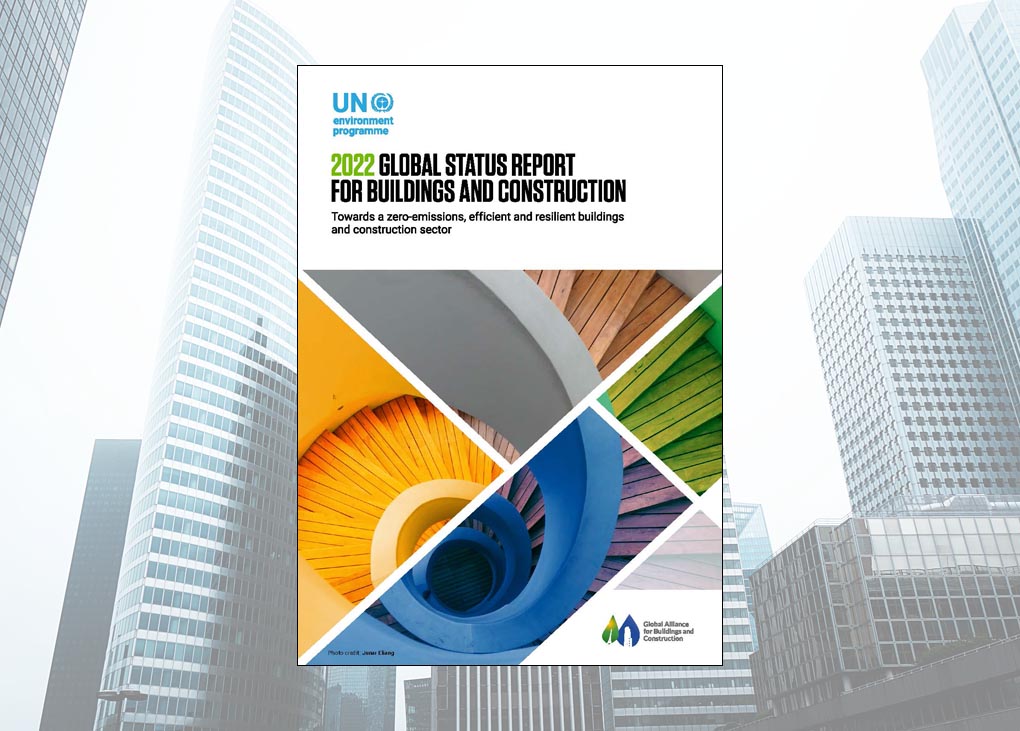The 2022 Global Status Report for Buildings and Construction has been released at COP27, containing alarming news for the sector. Overall, it indicates that after a temporary drop in emissions during the pandemic, emissions have hit an all-time high. This has been driven by increases in construction that have wiped out improvements in energy efficiency.
The global status report provides an annual snapshot of the progress of the buildings and construction sector on a global scale. It reviews the status of policies, finance, technologies and solutions to monitor whether the sector is aligned with the Paris Agreement goals. It also provides stakeholders with evidence to persuade policymakers and the overall buildings and construction community to take action.
Growth outstrips efficiency
The 2022 report finds that energy demand from buildings increased by around 4 per cent from 2020 to 135 EJ – the largest increase in the past 10 years.
The report also notes that CO2 emissions from buildings operations have reached an all-time high of around 10 GtCO2, around a 5 per cent increase from 2020 and 2 per cent higher than the previous peak in 2019.
The report’s stark verdict: The buildings and construction sector is not on track to achieve decarbonisation by 2050.
Mark Radka is Chief of the UNEP Energy and Climate Branch. Speaking at the launch event for the report at COP27, he presented the report as “a mix of good and bad news”.
“We know that investment in building energy efficiency rose last year,” said Radka. “But the growth in floorspace outpaced these gains. And this means that the gap between the climate performance of the building and construction sector and the 2050 decarbonisation pathways is in some ways widening.”
Local perspective
What then, does the report mean for Australia?
ASBEC Executive Director Alison Scotland sees the report as a further call to action for the building and construction sector.
“The findings in the Global Status Report for Buildings and Construction show that we cannot take the foot of the (electric vehicle) accelerator in our work on decarbonising the Australian built environment,” says Scotland.
“We have the technology to decarbonise now – but we must do this at speed and scale to smooth the way for other hard-to-abate sectors. Radical collaboration is the only way to go, harnessing the power of our stakeholder and government networks to get the job done quickly.”
Fellow ABSEC member and foundation member of the Global Alliance for Buildings and Construction (GABC) Professor Deo Prasad points out that Australia is making progress.
“The report is a global status based on in-country contributions and actions on the ground,” says Prof. Prasad. “Hence, slow uptake is an average. Australia is well ahead now.”
But he says that measures like those promoted by ASBEC are needed to move towards net zero in building and construction.
“This includes more stringent codes to eliminate worst practices,” says Prof. Prasad, “[and] governments taking the lead in their building stock and large portfolio owners making similar commitments, and a whole of building/infrastructure and whole-of-life approach that includes embodied carbon.
“It also requires innovation and knowledge transfer funding to take new technologies and knowledge to market, education, and community engagement support at scale.”
The 2022 Global Status Report for Buildings and Construction is available at the UNEP website.
 Mark Vender
Mark Vender


Leave a Reply